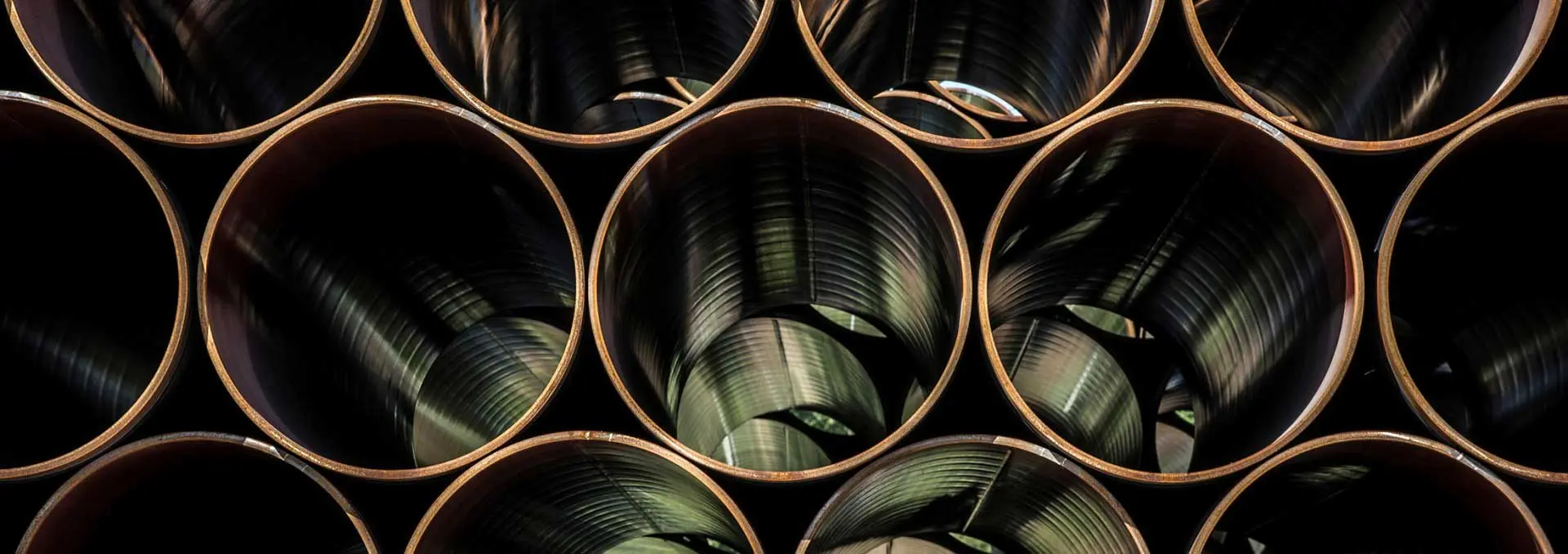- Hydrotest of ASTM A795 Pipes
The ASTM A795 lays out the requirements for each length of pipe to be subjected to a hydrostatic test by the manufacturer. The hydrostatic test is essential in order to ensure that there are no leaks in the pipe wall. This standard also covers the testing of pipe with plain ends, with threads only, or with threads and couplings. The hydrostatic test may be applied to single or multiple lengths, and it is important that all lengths of pipe be tested in order to ensure the quality of the entire batch. By adhering to the ASTM A795 standard, manufacturers can ensure that their pipes meet the necessary requirements and are of the highest quality. The minimum test pressure is in the Dimension & Size Table above.
- Nondestructive Electric Test of ASTM A795 Pipes
According to ASTM A795, nondestructive electric testing (NDT) can be used as an alternative to the hydrostatic test for black and hot-dipped galvanized steel pipe. NDT is a process that uses electrical current to test for defects in the material without causing damage to the pipe. When accepted by the buyer, each pipe must be tested with an NDT before it can be used in a fire sprinkler system. The use of NDT provides a number of benefits over hydrostatic testing, including shorter testing times and less disruption to the construction schedule. In addition, NDT is more effective at detecting defects in the weld area, making it a more reliable test for ensuring the quality of the pipe. As a result, the use of NDT is becoming increasingly common in the fire sprinkler industry.
- Flattening Test of ASTM A795 Pipes
The standard ASTM A795 requires that a flattening test be performed on pipes to ensure their quality. The test involves flattening a specimen of the pipe, at least 100 mm in length, between two parallel plates. The weld is located either 0 or 90° from the line of direction of force, as required. There are 3 steps to the test:
1. The first test is for the ductility of the weld, and it is performed by slowly flattening the weld until it breaks. If there are any cracks or breaks on the inside or outside surfaces before the distance between the plates is less than two-thirds of the original outside diameter of the pipe, then the weld is not up to standards and must be fixed.
2. The second test is for ductility exclusive of the weld, and it is performed in the same way as the first test. However, if there are any cracks or breaks on the inside or outside surfaces before the distance between the plates is less than one-third of the original outside diameter of the pipe, but is not less than five times the wall thickness of the pipe, then the weld is not up to standards and must be fixed.
3. The third and final test is for soundness, and it is performed by continuing to flatten the weld until it breaks or the opposite walls of the specimen meet. If evidence of laminated or unsound material or incomplete weld is revealed during this test, then the entire welding job must be deemed unsatisfactory.

 English
English Español
Español




 Tel : +86-18565811709
Tel : +86-18565811709 Email :
Email : 





